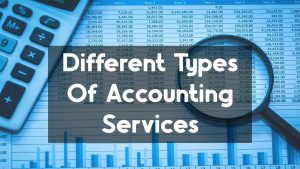Accounting principles are the basic rules and procedures that businesses will obey while reporting all financial details and accounts.
The point of having and following these principles is about being able to converse economic information from one business to another in a language that is appropriate and easy to understand.
Companies that report their financial reports to the public must obey these standards in preparing their statements.
 accounting-principles
accounting-principlesCompany law and other laws, based on the nature of a corporation or organization, decide what accounting principles they are expected to apply. Generally Accepted Accounting Principles (GAAP) are commonly known as the fundamental accounting standards.
GAAP provides a structure for company accounting standards, concepts, objectives, and conventions, as guidance towards how financial statements are prepared and presented
Her are 12 Accounting Principles that must be followed
Economic entity assumption –
The financial records of each economic organization have to be kept separately. Economic entities include companies, governments, school districts, churches, etc.
While accounting information can be combined for financial reporting purposes from several different organizations, each economic event needs to be identified with and reported by a particular entity.
Furthermore, company reports would not contain the owners ‘ personal assets or liabilities.
Monetary unit assumption
Only observable transactions are part of accounting documents for an economic organization.
In monetary units, such economic activities involving a company, for instance, the appointment of a new managing director or the launch of a new product can be obtained easily and thus are not documented in the accounting reports of the company.
In addition, records of accounting should be measured in a stable currency.
Full disclosure principle
Financial statements typically provide details on the past performance of a company.
Nevertheless, the financial position of the Company may be imminently and considerably affected by ongoing litigation, unpaid transactions, or other circumstances.
The theory of full transparency demands that all information be disclosed in the financial statements. Footnotes accompany financial statements for the purpose of providing information about the company’s documentation and reporting policies.
Time period assumption
The majority of corporations operate for long periods and the effects of economic operations will be recorded using arbitrary time frames. The period can be one day, one month, one year, or another arbitrary period, based on the type of report.
If other transactions are registered, the use of artificial time periods leads to queries. For starters, how would an accountant report the costs of equipment that will last five years?
Reporting the whole cost in the purchase year could make the business unprofitable and unreasonable in the following years.
After determining the time frame, the accountants or the accounting service provider will use GAAP to document and report the transactions of the accounting period.
Accrual basis accounting
GAAP needs, in most situations, the use of accrual accounting, instead of cash accounting. Accrual basis accounting, that adheres to the concepts of income measurement, matching, and costing mentioned below, measures the financial dimensions of any economic transaction in the accounting cycle it happens, irrespective of whether the cash changes hands.
Earnings are reported under cash-based accounting only if the business collects cash or its equivalent and expenditures are reported only if the business pays with cash or its equivalents.
Revenue recognition principle
Revenue shall be received and accepted upon delivery of a good or service, regardless of the nature of the cash flow. Say a shop orders a wholesaler’s 300 DVDs in March, gets it in April, and pays them out in May.
If distribution happens the wholesaler acknowledges the sales revenue in April, not in March when the contract is made or in May once the payments are received.
Matching principle
The cost of doing business is reported in the same timeframe as the profits they earn. Definitions of these costs include the cost of manufactured items, collected wages, and fees, insurance premiums, used materials, and projections of future repair work on the sold products.
Remember the wholesaler who shipped 300 DVD’s in April to a supermarket. Such DVDs move from a benefit (inventory) to an expenditure (cost of the products sold) as the payments are received in order to calculate the income from the sale.
Cost principle
Assets are reported at cost, which would be equivalent to the price exchanged when they were purchased.
Going concern principle
Unless it is stated, the financial statements are made under the assumption that perhaps the business will stay forever in existence. Thus, assets should not be sold at fire-sale prices, and loans should not be repaid until maturity.
This concept helps in the identification of short-term (current) and long-term assets and liabilities. Long-term assets are expected to keep for over a year. Long-term obligations are liabilities that are borrowed for more than 1 year.
Relevance, reliability, and consistency.
The financial reports must be valid, accurate, and adequately prepared to be useful. Pertinent data helps a decision-maker consider the past results, current situation, and future outlook of a business so that informed decisions are taken on a continuous basis.
Obviously, individual users can have different information requirements that involve information in various formats. Internal users also need more comprehensive details than external users, who might need to see just the value of the company or its ability to pay back loans.
Principle of conservatism.
Accountants may use their intuition to report estimated transactions. Items like equipment, no one know how long it will remain in working condition and how much of the account receivable will be paid. These types of items require estimation. In financial data reporting, accountants adopt the conservativism principle, which allows the less favorable estimate to be selected if the likelihood of two estimates is equally calculated.
Materiality principle
Accountants are subject to the concept of materiality, which implies that specifications of any accounting standard can be overlooked when the users of financial information are unaffected.
To be sure, monitoring individual paper clips or pieces of paper is utterly irrelevant and unnecessarily onerous to the accounting department of every organization. Even though there’s no definite measure of substantiveness, the decision of the accountant on such subjects must be valid.



